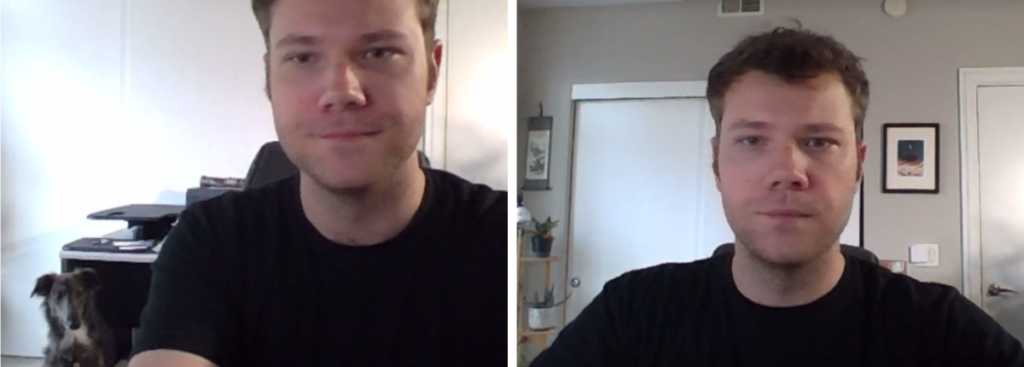In the absence of a physical office location, what does ‘office design’ mean for employees who work from home (WFH)? There are two ‘spaces’ that combine to make up a remote employee’s workplace. The first is their physical location, where they’re actually sitting at a computer doing their work. The second is their virtual location, which can be defined as the platform or collection of programs that an employee uses to complete their work online. For companies seeking to support their remote staff, a consideration of both spaces will be necessary.
The Physical Office
Start with embracing what WFH is
When home space becomes a workspace, it’s natural that one will inevitably affect the other. In embracing WFH culture, we must normalize and embrace that there are variables at play in every employee’s environment that employers cannot and should not try to control.
- Interruptions
There will be interruptions—dropped internet connections, kids screaming in excitement, cats sitting on keyboards, etc. Acknowledging this reality and having defined procedures for dealing with these inevitabilities will keep things stress-free and efficient. If there are important meetings that management particularly wants to keep uninterrupted, communication is key. Being flexible in scheduling may allow an employee to capitalize on naturally quieter times during their day, and planning ahead will allow the employee to temporarily adjust their environment or location to suit their work needs. - Decor
While it would be ideal for all remote employees to have spacious, private offices in their homes, that is simply not the reality for most. Many remote workers have gotten impressively creative with some WFH desk setups, as shown in this 2020 CNN article. As varied as these home workspaces are, they have one thing in common: they all work!
So long as an employee’s work is getting done on time and to satisfaction (and there is nothing on display that could be potentially harmful or offensive), there is no need to question or comment on what their workspace looks like. If a role requires high-level professional meetings or face time with current and prospective clients, providing a good camera light, external mic, and coaching on best practices for virtual backgrounds is appropriate. - Location
With the line between home life and work life blurring with remote employment, it is important to understand appropriate boundaries regarding work requests. Limiting where and when an employee can travel hampers future open and proactive communications from taking place. Instead, let your employees take responsibility for ensuring they can connect effectively and complete assignments to the proper standards, no matter where they choose to do their work.
Recognizing and accepting these eventualities are minimum requirements for employers of a remote workforce. Furthermore, embracing flexibility can be linked to better mental health, work-life balance, and increased workplace satisfaction for everyone–including those in leadership positions.
So what can be controlled in a remote employee’s physical workspace? There are several things employers can do and provide to support their remote employees and set them up for success- wherever that physical location may be.
- Standardize tech wherever possible
For employers constructing a remote office, it can save time, frustration, and money to ensure all employees are equipped with the same brands and models of equipment wherever possible. Not only will this standardize the employee experience, but it will also enable employees the opportunity to troubleshoot issues together rather than relying solely on the office tech support specialist. - Provide home office stipends
No two remote employees will have the same work from home setup. Some will be better equipped than others, while some will have significant barriers in their immediate environment to working in comfort. A home office stipend is a payment given to employees to use towards investing in their remote workspace. Whether spent on ergonomic chairs, an air conditioner, or a rented desk in a co-working space, a home office stipend empowers remote workers to equip themselves as needed to do their best work comfortably and efficiently. - Accommodate special needs
Standardizing equipment and providing a stipend are great ways to level the playing field for your employees. However there may be a few individuals who need additional flexibility and support to shine their brightest. Keeping regular communication open and working together to create solutions to specific needs can positively impact an employee’s day-to-day work, producing a happy and productive team member.
The virtual office
Don’t make the mistake of thinking that a virtual space does not need the kind of management and structure that a physical office space needs! If anything, a virtual office space requires even more explicit communication and coordination to ensure that individual employees and the organization have what they need to perform.
Improve remote work with a collaborative virtual office platform
Luckily, not all of the foundational work of establishing a remote workplace will fall to organizational leadership. Post-pandemic, there are now a wealth of remote work platforms that organizations can choose from to get them started.
Many of these platforms vary widely but have similar core offerings that are now considered necessary office tools for modern work, such as cloud storage, video conferencing, and instant messaging and email capabilities. The decision on which to choose is an important one that organizations will want to weigh carefully. “Technology and workplace tools are, for all intents and purposes, the new workplace,” says the Harvard Business Review. “As such they’re becoming central in attracting and retaining new talent, fostering workplace culture, creating productivity and more.”
Whatever platform you choose, it will be essential to offer onboarding training and self-serve resources for further education and reference.
Meta work: proactively prioritize organization and communication
Even with a virtual office platform, employees can still be at a slight disadvantage. For example, it can be difficult to obtain quick clarifications when they’re in a work-from-home situation. Remote employees must rely on the timeliness of instant chat, email, or phone and video calls for all of their communications. Depending on their colleagues’ schedules, this could have them waiting much longer than they would in a physical office. Proactive organization and communication can resolve many of these time-consuming clarification requests.
Some easy first steps towards better organization and communication include:
- Write clear meeting descriptions or agendas into your meeting invitations
- Create a central place where all important organizational resources are stored and accessed
- Implement naming conventions for saved files to make them easy to find
- Document workplace conduct rules, communicate them and stick to them
- Schedule regular check-in’s with direct reports to ensure there is no uncertainty about work responsibilities and roles
Creating and adhering to best practices for communicating and providing a clear, organized structure for company documents and resources saves employers time and money and allows employees to work efficiently and effectively.
Office enhancements
Keeping up with the newest technology enhancements and tools is important in the ever-changing landscape of virtual work. There are additions to the established platforms that improve on existing functionality and break down communication barriers that are still present in even the most efficient remote work teams. The Frameable Spaces integration in Microsoft Teams combines the structure of the Teams environment with added ability to work transparently, meet and communicate with teammates easier. Learn more about how the Frameable Spaces app can transform your Microsoft Teams experience today.




















